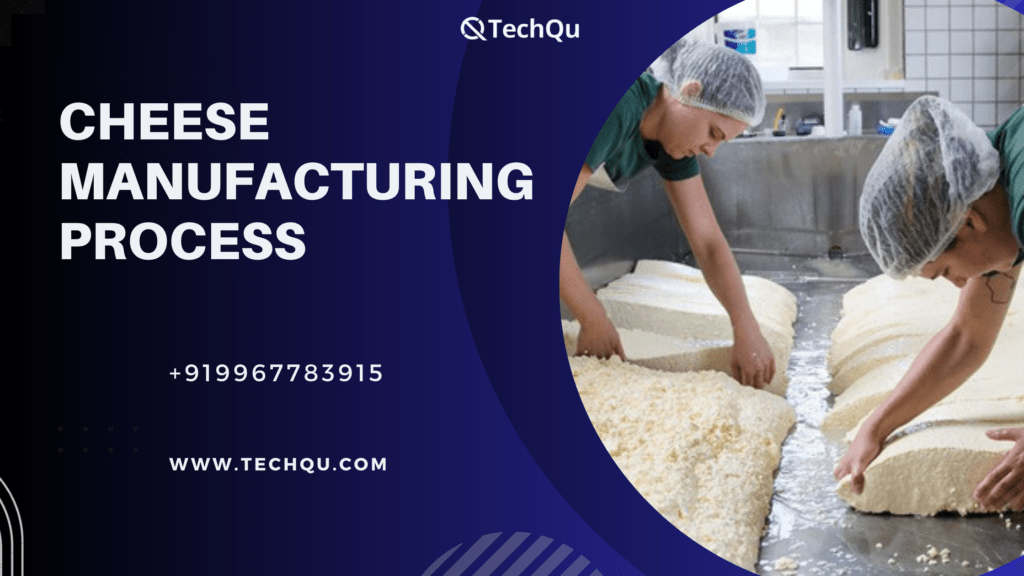Introduction of Manufacturers Process Cheese
Cheesemaking is an ancient art, transforming fresh milk into a delicious and versatile food. At its core, the process revolves around separating the milk’s solid curds from the liquid whey. Here’s a quick look at the basic steps:
- Preparing the Milk: The cheesemaker starts with high-quality milk, which may be pasteurized to ensure safety. Sometimes, milk is standardized for fat content.
- Introducing the Good Bugs: Specific bacteria cultures are added to the milk to ferment the lactose sugars and slightly acidify it. This step contributes to flavor and texture.
- The Curd is Born: Rennet, an enzyme, is introduced to curdle the milk. Rennet separates the milk solids (casein protein) from the liquid whey.
- Cutting the Curds: The curds are then cut into specific sizes, depending on the desired cheese type. This step influences texture and drainage of whey.
- Shaping and Pressing: The curds are cooked, stirred, washed, and pressed to expel whey and achieve the desired moisture content.
- Salting: Salt is added for flavor, preservation, and to draw out remaining moisture.
- Aging for Perfection: Finally, the cheese is shaped, often placed in molds, and left to age in controlled temperature and humidity conditions. During aging, the cheese develops its characteristic flavors and textures through further enzymatic activity and microbial growth.
The market of Cheese Production In India
The Indian cheese producing market has been feeling a sizable surge lately owing to a range of reasons, such as urbanization, higher incomes and expenses, changes of dietary practices and the recognition of cheese as a healthy foodstuff. While Chiz consumption rates in India are low compared to the West, the rate is growing correspondingly with the growing more adventurous taste of consumers and their need to improve their food knowledge.
Steps for the animal to machine for cheese making?
It all starts with milk from cows, sheep, goats, or even buffaloes. Large dairy farms use automated milking machines to collect milk efficiently. The milk is then filtered and sometimes standardized for fat content. This initial processing is often done with the help of automated .
Which processed is used to make cheese?
There isn’t one single process used to make cheese, but rather a series of steps that can vary depending on the type of cheese being produced. However, some key processes are common to most cheesemaking.
Curdling: This is the essential step where milk proteins coagulate to form curds. Rennet, an enzyme, is typically used to achieve this.
Draining the Whey: The curds (solids) are separated from the whey (liquid) This allows the cheese to develop its characteristic texture and concentrate the milk’s flavors.
Salting: Salt plays a multifaceted role. It helps preserve the cheese, draws out moisture, and enhances the flavor.
Ripening (for some cheeses): This step allows the cheese to develop its full
Best Processing cheese Manufacturer?
Determining the “best” processed cheese manufacturer depends on what you prioritize. Here’s a breakdown of some leading manufacturers to help you decide:
Kraft Heinz: A global giant with popular brands like Kraft Singles and Velveeta. They offer consistent quality and affordability.
Lactalis: French company with Président, Galbani, and Parmalat brands. They focus on sustainability, quality, and market reach.
Savencia Fromage & Dairy: French company known for Kiri, Le Petit Basque, and Saint-Môret cheeses. They excel in specialty processed cheeses.


